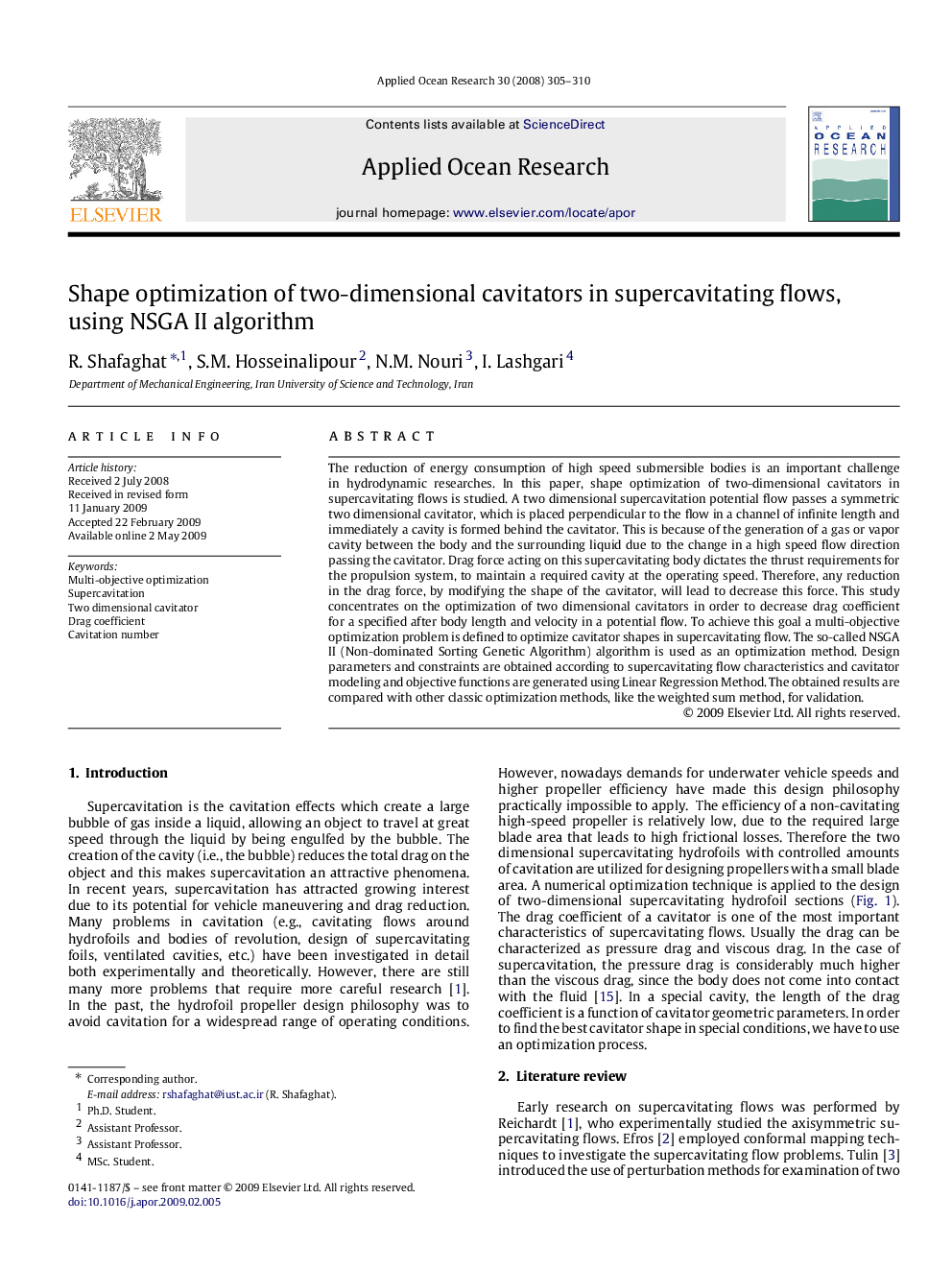| Article ID | Journal | Published Year | Pages | File Type |
|---|---|---|---|---|
| 1720385 | Applied Ocean Research | 2008 | 6 Pages |
The reduction of energy consumption of high speed submersible bodies is an important challenge in hydrodynamic researches. In this paper, shape optimization of two-dimensional cavitators in supercavitating flows is studied. A two dimensional supercavitation potential flow passes a symmetric two dimensional cavitator, which is placed perpendicular to the flow in a channel of infinite length and immediately a cavity is formed behind the cavitator. This is because of the generation of a gas or vapor cavity between the body and the surrounding liquid due to the change in a high speed flow direction passing the cavitator. Drag force acting on this supercavitating body dictates the thrust requirements for the propulsion system, to maintain a required cavity at the operating speed. Therefore, any reduction in the drag force, by modifying the shape of the cavitator, will lead to decrease this force. This study concentrates on the optimization of two dimensional cavitators in order to decrease drag coefficient for a specified after body length and velocity in a potential flow. To achieve this goal a multi-objective optimization problem is defined to optimize cavitator shapes in supercavitating flow. The so-called NSGA II (Non-dominated Sorting Genetic Algorithm) algorithm is used as an optimization method. Design parameters and constraints are obtained according to supercavitating flow characteristics and cavitator modeling and objective functions are generated using Linear Regression Method. The obtained results are compared with other classic optimization methods, like the weighted sum method, for validation.
